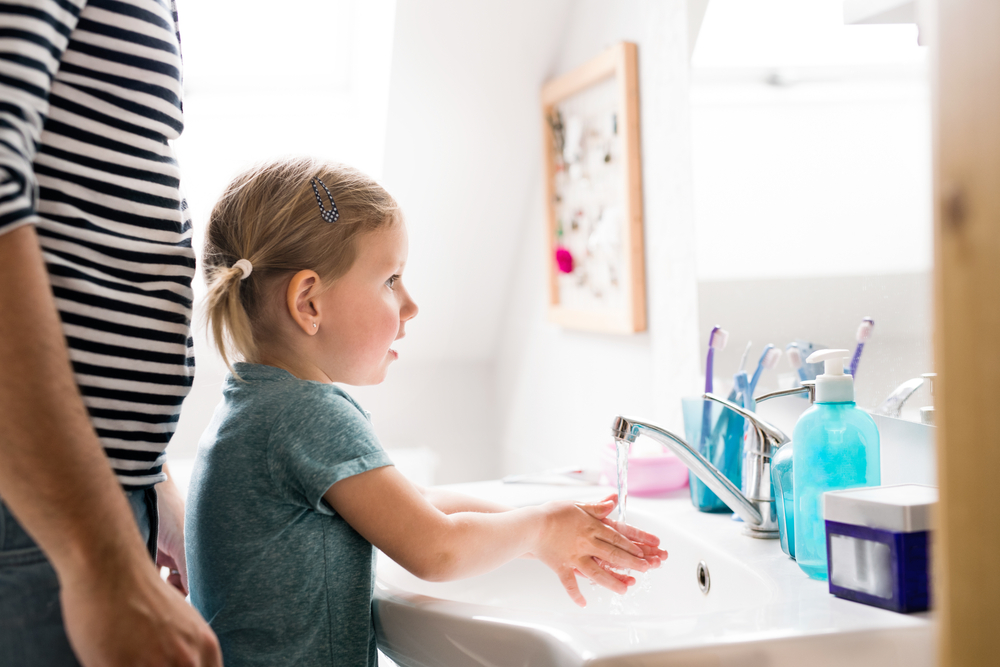
by Kyle | 14th Sep, 2022 | Blog, Inspiration

When a child is present in your home, even the most tedious and mundane areas of the house can become areas to consider in terms of their safety and child-proofing. The bathroom is certainly one of these areas, as it can often contain certain household products or have slippery surfaces.
If you’re in the midst of trying to childproof your bathroom, there are a few fast fixes that can be made. In this article, we share the essential tips to childproof your bathroom so you can protect your children and maintain peace of mind.
Why childproof your bathroom?
Without proper care accidents can happen. A bathroom that has been carefully childproofed can go a long way in avoiding any accidents that might happen, such as slipping on a wet floor. Beginning with the obvious hazards, such as water areas, is a good place to start. So, once your baby is on the move, it’s time to consider these top tips to childproof your bathroom:
1. Prevent accidents with entrances and exits
Think of all the entry and exit points in your bathroom and safeguard them. This could include the door to the bathroom and the windows.
It’s worthwhile putting a childproof lock on the door to keep your children out of the bathroom when you don’t want them in there. A bonus tip to be aware of is to put a lock on both the inner and outer knobs to prevent you from getting locked out of your bathroom.
2. Lock the cabinets up
It doesn’t matter whether your cabinets are low on the ground or high above the sink; they all need locking up.
Cabinets are usually where cleaning and beauty products are stored, both of which contain chemicals that can cause harm when used incorrectly. Keep interested hands away by safeguarding with a child lock.
Request a Free Brochure
Simply fill out a quick form and see how we can transform the way you bathe.
Request Free Brochure
3. Protect against electrical hazards
Whether it’s your curlers or an electric razor, whatever you plug into the bathroom outlet needs to be kept away from water and always put away when finished with.
Also, putting covers on all electrical outlets will help childproof your bathroom and stop children from putting their fingers inside.
4. Make bath time safe and fun
Bath time is an enjoyable part of a child’s day-to-day routine. It’s important to make bath time safe so it’s a fun experience for all involved.
Here are a few areas to keep in mind that will go a long way in childproofing your bath time:
- Use slip-resistant mats: Prevent falls in the wet tub or on the damp bathroom floor by using slip-resistant mats.
- Check the water temperature: Set the temperature of your house water to a maximum of 49 degrees Celsius to prevent scalding. If you’re unsure of water temperature, why not buy a thermometer for peace of mind?
- Use a bath seat: A bath seat can help keep your child secure and in one position while in the bath. This also helps to make the process of washing your baby easier.
- Always be on standby: Never leave your baby in the bath alone and teach him or her to stay seated while in the bathtub.
- Install grab bars: Grab bars can help to avoid any slipping-related accidents when getting in and out of the bathtub.
- Pad your bathtub tap: Taps are the perfect height for children to bump their heads or backs on while in the bath. Installing a safety tap or buying padding to go around it can prevent these accidents from occurring.
5. Take the rubbish out
A bin can be an entertainment magnet for small children and can easily be forgotten about. As such, make sure to empty this so that the area doesn’t get messy!
6. Use a training toilet
If your child is toilet training, it’s important to use a training potty that’s appropriate for their age and size. A small child won’t be able to use the loo yet, so having a training toilet makes this process much easier and simpler in the long run.
7. Keep on top of mould and mildew
It’s in children’s nature to splash around when in the bath, but this can result in the bathroom getting wet and damp in places. All the water accumulation can cause mould and mildew to occur, not only making your bathroom more prone to bacteria but also more slippery too.
Clean your bathroom on a regular basis with child-friendly cleaners, and be sure to check under mats, in cupboards and even on safe bath toys. Toys and sponges that absorb water can accumulate mould if they aren’t drained and dried properly after each use.
8. Consider installing safety glass
If you have a glass shower door, it could be worthwhile replacing it with safety glass. This could give you peace of mind for years to come, as it’ll ensure the glass doesn’t potentially crack, which it can happen after a long time of use.
Making your bathroom safe
As you can see, there are some areas you should consider proofing when it comes to bathrooms. If you really want to get serious about improving your bathroom, for those young or old, it may be worth investing in a walk-in shower or a walk-in bath.
These products are designed with safety in mind to ensure a secure and enjoyable experience is second nature every time it comes to using the bathroom.
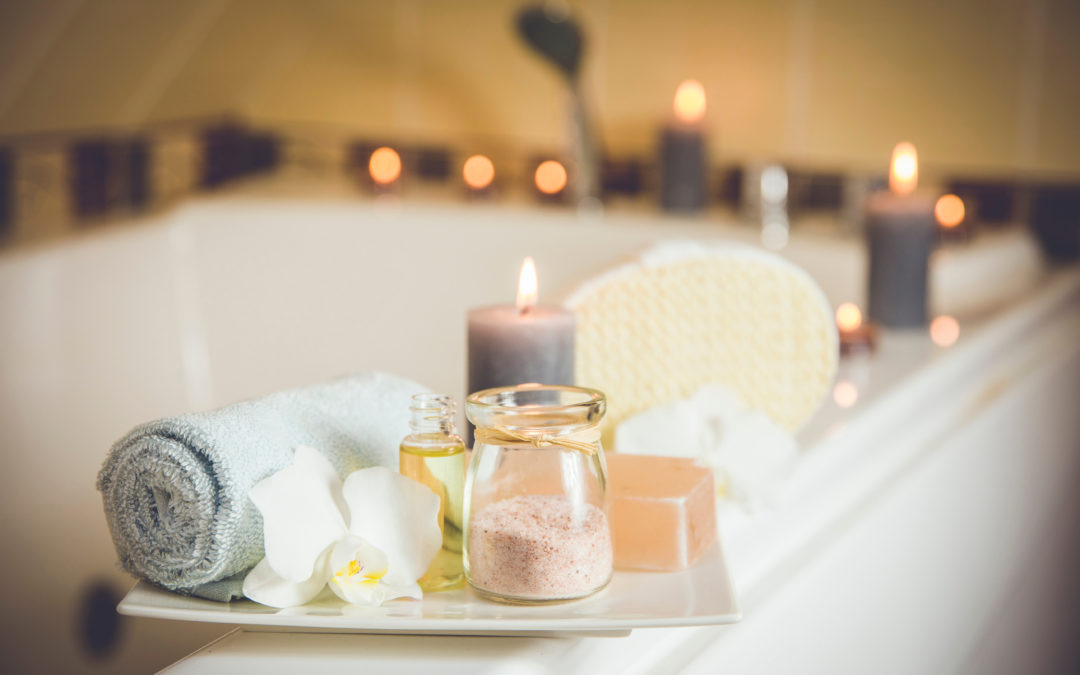
by Kyle | 21st Sep, 2021 | Blog, Inspiration
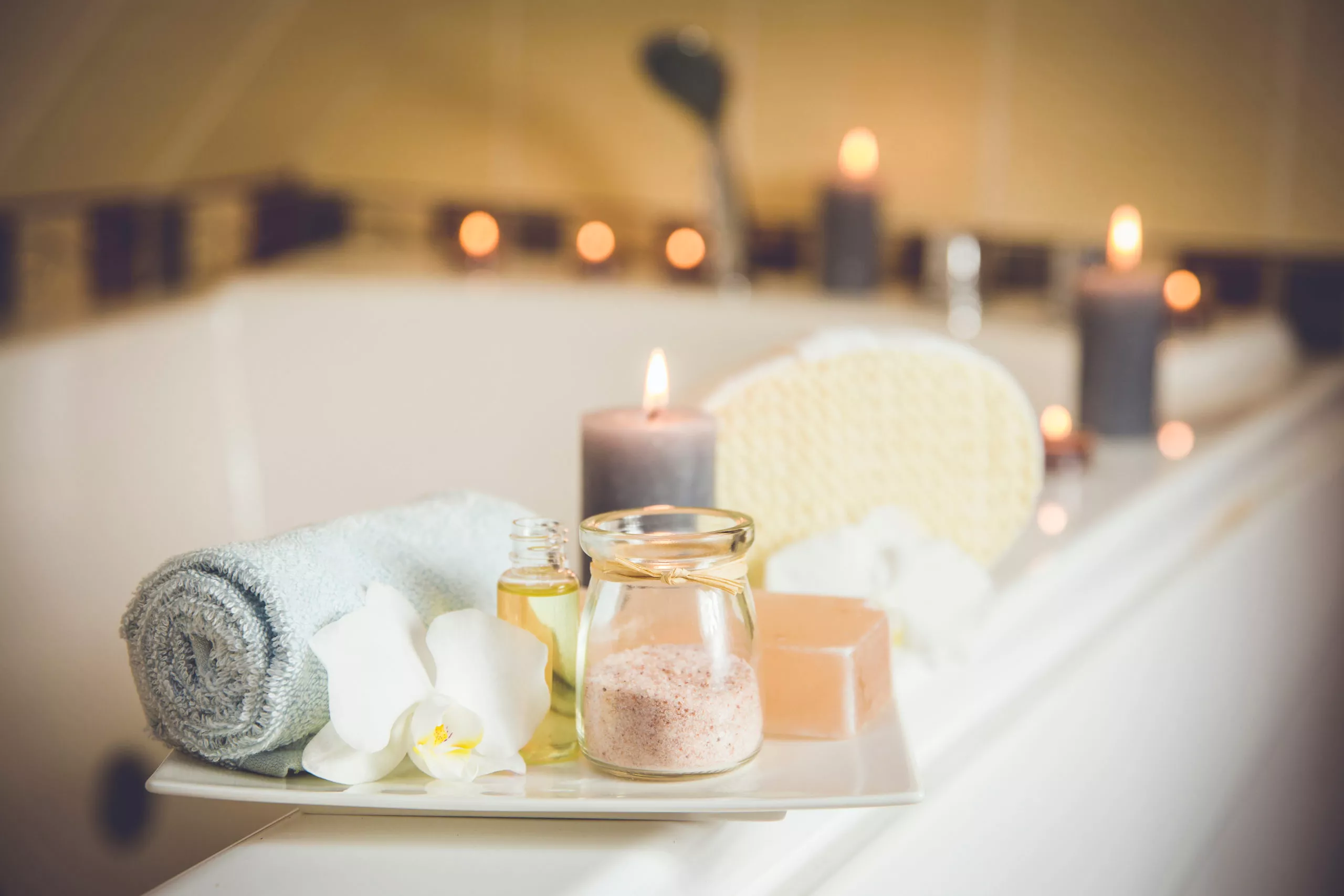
Self-care has never been more important. It’s crucial to make time for yourself and to do things that will help you unwind.
Having a bath is that time in your day to switch off from the outside world, disconnect from your working day and have the quality time that you deserve.
Running the perfect bath is something you can easily master to make your evenings (or mornings) more relaxing than ever.
If you’re full of questions about bath time or looking for some tips to maximise your experience, here is our step by step guide on how to run the perfect bath.
1. Setting the mood in the bathroom
Creating the perfect bath isn’t just about what goes in the bath, it’s how you set the ambience around you.
Relaxation is all about energy and feeling relaxed physically and mentally, that by setting a chill mood, it’ll help aid you into the ultimate relaxation experience.
Start by dimming the lighting (if your bathroom has that feature) or instead lighting a few candles to minimise the brightness of the day and trick your brain into a bedtime mindset.
Then, if you’re feeling fancy, scatter some rose petals and spritz some calming spray into the air. It’ll add to the overall effect of the room.
2. Getting the water temperature just right
Some people love a piping hot bath, others prefer it colder but for the best bath, warm water is the way forward.
If the water is too hot, it can lead to sweating, feeling uncomfortable and drying the skin out.
Whereas, although cold water does have its benefits including stimulating the immune system, promoting good blood circulation and helping calm dry and itchy skin, it’s not the best way to relax.
We’d recommend a running a warm bath – warm water is different for everyone so the best way to test it is the old school trick for babies: dip your elbow in the bath and if you feel that the temperature is comfortable and not making you flinch, it’s ready.
3. Adding in relaxing bath products
The world of bath products has blown up in recent years, with many things to choose from including bath bombs, bath salts and bath oils – that it can be hard to know where to start.
The first thing we’d suggest is to throw in a scoop of epsom salts. Epsom offers a whole range of benefits including reducing inflammation and relieving joint pain.
As the salts are your base, the next fun step is to add in bubbles. It can’t be a bath without bubbles, right?
For the ultimate bubble experience, run the bubble bath under a running tap as they’ll lather up rather nicely.
Then, it’s onto oil. You can either opt for a bath oil or an essential oil. Essential oils such as lavender are a brilliant way to add a subtle scent to your bath and depending on the oil, have a positive effect on the calm feel of the bath.
Lavender in particular is great for putting you in a sleepy mood but chamomile and rose are great options too.
Bath oils have a similar experience to essential oils, however, are a better option if you’d like an hydration effect on the skin, especially as hot water can dehydrate the skin.
4. Utilising your luxury skincare
Bath time is ideal to jump into your basket of skincare and the products you don’t use often enough.
It’ll not only increase the spa experience but do wonders for your calm state of mind. We’d suggest popping on a face mask, whichever kind you prefer for 10 minutes or so and then washing it off with a warm hot cloth.
Not only will it be relaxing, but a blessing to your pores.
5. Using a comfy bath pillow
Lying down in a bath isn’t exactly the most comfortable thing, however, with a bath pillow, your comfort levels will go up 100%.
If you don’t have a pillow to hand, you can always roll up a towel and lie on it to give your neck the support it needs.
6. Preparing relaxing activities
Baths can vary in length in time for everyone, some love a quick dip, whereas others can be in there for hours.
If you’re a longer kind of bather, then activities are an essential part of your bath routine.
Whether it’s reading a book, putting on some chill music, listening to a podcast or bringing your laptop in and watching your favourite TV show, there are many ways to keep entertained whilst relaxing.
7. Switching off all distractions
Taking a bath is your time and that means getting rid of all distractions.
Leave your phone in your bedroom and switch off anything that’ll sway you away from feeling any ounce of relaxation.
If you live with your partner or have kids, let them know not to distract you or prepare something to keep them entertained whilst you bathe.
8. Preparing drinks and snacks
To step up the ultimate bath, drinks and snacks are a great addition.
Pour your favourite glass of wine and bring along a bar of your favourite chocolate for pure indulgence. It’s your time after all.
9. Laying out comfy clothes for afterwards
Once you step out of the bath, the warm sensation can leave you quite quick so it’s always best to lay out comfy clothes.
This could be your favourite pyjamas, a dressing gown and fluffy socks, to maintain the level of joy across your skin.
10. Continuing the relaxation in your day
Relaxation shouldn’t stop when you step out of the bath. Once you’re in that mindset, it’s important to stay there so you’re able to unwind and go to sleep easily.
We would suggest having a slow evening after your bath, slathering your skin in moisturiser, dipping into a good book and journaling away before your head hits the pillow.
Running a great bath couldn’t be easier and is a luxury we all deserve once in a while. If you’re looking for walk-in baths and walk-in showers, take a look at our range online today.
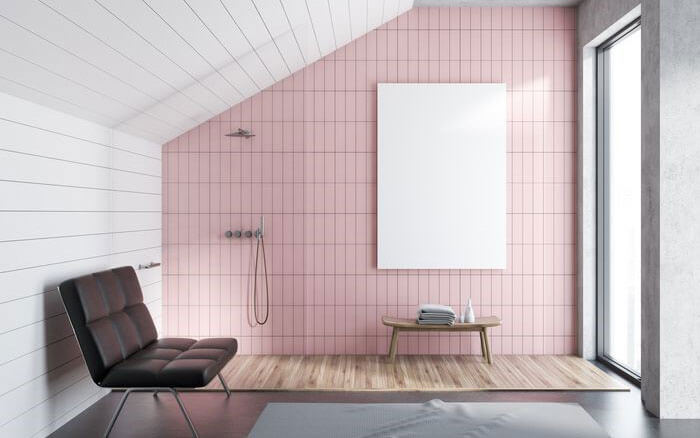
by mobilityplus | 29th Apr, 2021 | Inspiration
Is your bathroom in need of a fresh design update? We’ve rounded up the latest tiling trends for some modern bathroom ideas to help you get started.
To keep your bathroom feeling fresh, a cheaper alternative to remodelling and buying new bathroom furniture is to consider updating your design. Bathroom tiles can work for your floors and walls and can easily transform your space to look on-trend and inviting.
There’s so much variation when it comes to bathroom tiles, from colour, shape and texture, so there are plenty of ways to make your bathroom unique with a touch of your own personality.
If you’re looking to revamp your space, we’ve uncovered some of the latest bathroom tiles design trends to inspire your home.
1. Natural oak
For a contemporary twist on a classic style, wood-looking porcelain tiles give a rustic, unrefined ambience to your bathroom. Using tiles means you still have all the eye-catching design with the effective easy-to-clean material.
2. Pastel
A 1950’s bathroom trend is making its revival this year. Pretty-in-pink pastel tiles are back. For a minimalism approach to the design, opt for just one wall in a pastel shade. This will add vibrancy whilst giving the illusion of a bigger space.
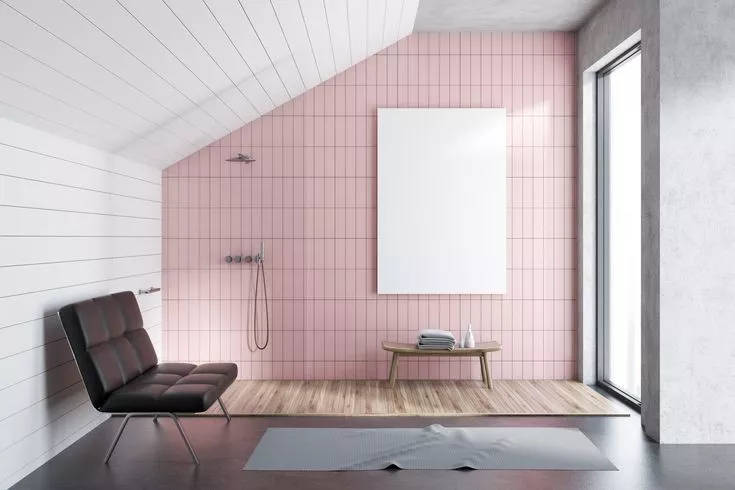
3. Marble
For a soft, gentle and inviting room that ticks all of the interior trend boxes, marble tiles are a perfect choice. The subtlety of the tile design puts a greater emphasis on your stylish bathroom features.
Adding marble to your bathroom doesn’t have to be like everything you see on Pinterest, you can experiment with a DIY approach. Addicted 2 Decorating shows a great example of how you can do this, plus, it can an enjoyable way to involve the whole family.
4. Mosaic
Reminiscent of an ethereal Japanese garden, mosaic tiles are a zen infusion to your space. From fish scales to leaves, these tiles come in varying shapes that are indicative of nature and organic surroundings.
5. Art deco style
Exude the luxurious glamour of the iconic 1920s style with art-deco inspired tiling. Whether it’s across your walls or floors, this design is all about elegance. Keep the colours to a minimum to avoid this tiling becoming overbearing, and let the pattern take control.
For inspiration on how you could make this style work in your home, the Lettered Cottage transformed their bathroom with some eye-catching tile design work.
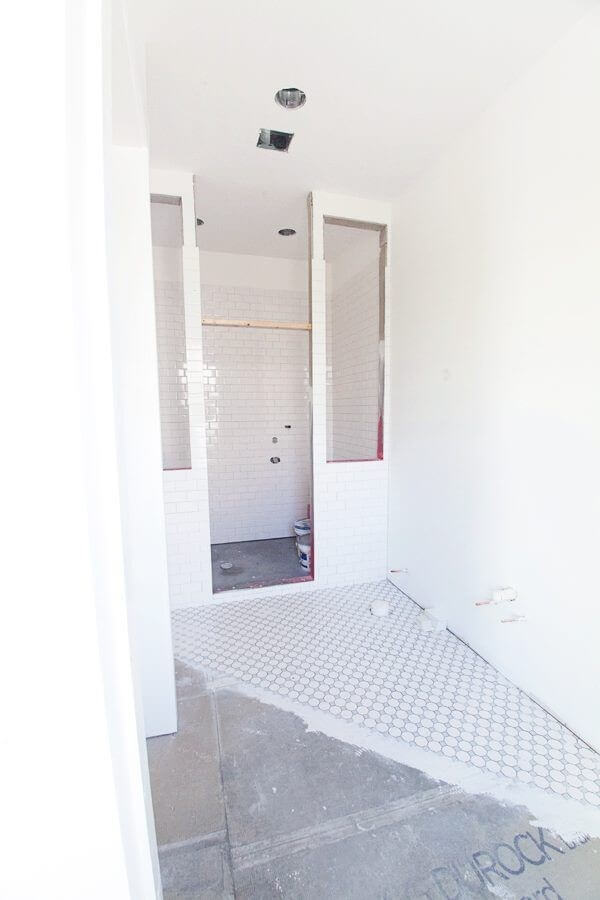
6. Penny tile
A resurgence of this 20th-century design style is making its way to our bathrooms. Once associated with historic interior, it’s now making an eye-catching appearance in cool cafes and next, it’s your bathroom.
This tiling design is comprised of small hexagon shapes that can make an impactful addition to your family space. Opt for a soft neutral shade, like white or grey for a minimal look.
7. Graphic patterns
Choosing bathroom tiles doesn’t mean they have to be ordinary. To add a daring sense of style to your space, you can opt for tiles with a fresh pattern. Transforming your floor with this trend will give your room a modern accent. So that the pattern doesn’t feel too overwhelming, keep your colours neutral and instead opt for a pop of colour with your accessories, such as a bright stool and plants.
Take inspiration from Young House Love who redecorating their bathroom flooring with some eye-catching graphic tiles.
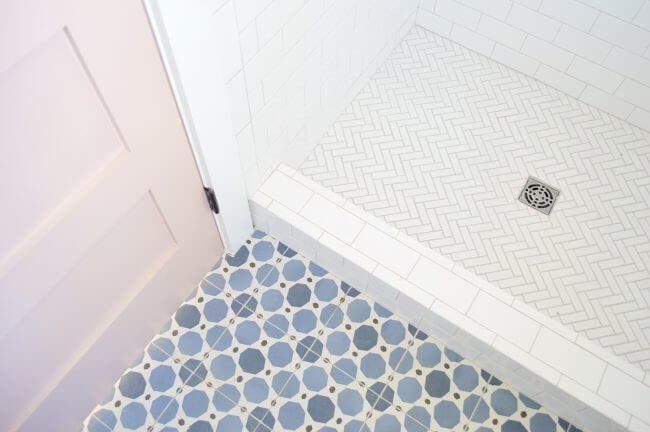
8. Textured tiles
Bring nature instead and create a chic and calming atmosphere with textured tiles. From rough finish designs, like wood, it will ooze a spa-like feel and set your mind at ease. Keep these tiles to just one wall, so they’re not overbearing.
9. Metallic finishes
Ooze modern sophistication with metallic bathroom tiles. From rose gold to grey, a dazzling addition of metallic design will make your space sparkle. Choose one metal finish and use it in small doses for maximum impact.
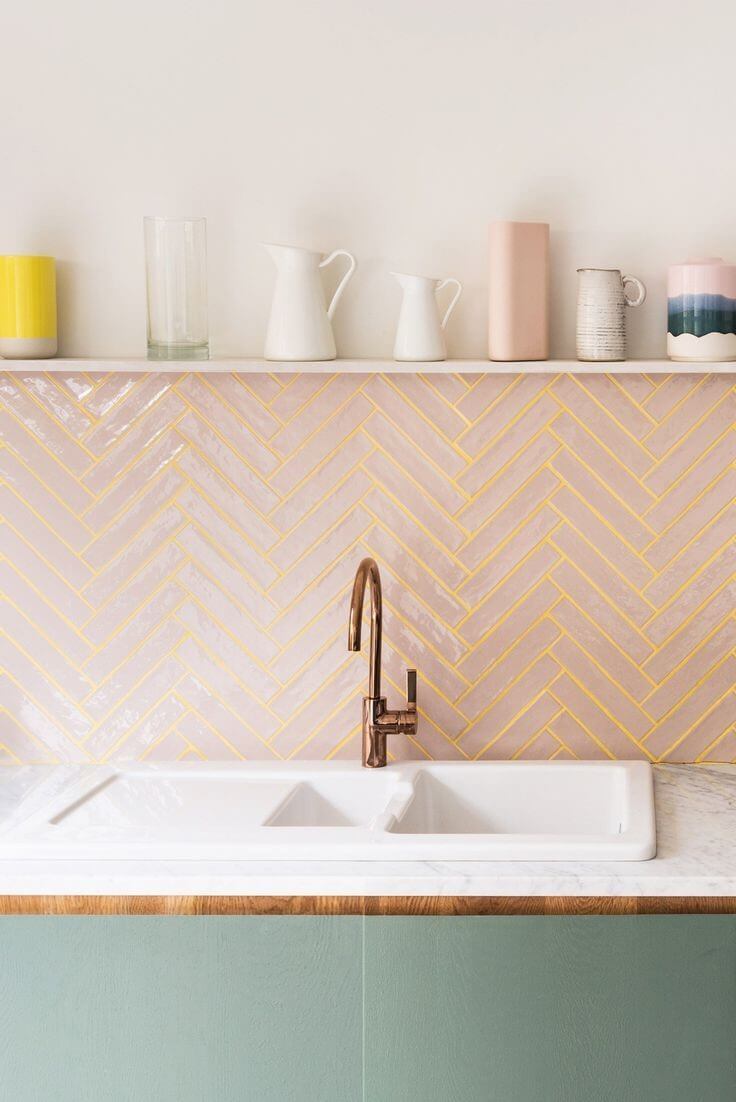
10. Painted tiles
Adding colour to your bathroom doesn’t have to be just through the accessories that you decorate with. Express your artistic side with this DIY trend of painted tiles. Stick to grey, sandy tones to keep your design minimal. Not only will you feel tremendously rewarded once you stand back and see your finished flooring, but it can definitely be a great activity to get your friends and family involved in too.
Driven by Décor shows how she transformed their family bathroom with this DIY style and offers a straightforward step-by-step guide to getting started.
11. Reflective mirror tiles
Reflective tiles are a great choice especially for smaller bathrooms or bathrooms lacking natural light. These tiles truly help open up space as well as add texture and dimension to create a luxurious, modern look. One small thing to note is that while these tiles look gorgeous when styled properly, they do need to be kept clean to maintain the shine. For that reason, it’s best to opt for installing them in a relatively splash-proof area of the bathroom or opt for a mosaic or antique look. Top tip – match with wooden style tiles or accessories to avoid a cold look.
Find more tips and tricks about the interior design and styling options of mirror tiles in this comprehensive article by Deavita.net, an online magazine dedicated to modern interior design.
12. Walls and floors
While keeping the same style tiles for both your walls and floors can seem like overkill, a simple patterned tile can create a truly extraordinarily modern look. Going with this design not only reduces the problems with matching different style or colour tiles throughout the bathroom but also allows greater flexibility for accessorising with storage, rugs and shelving.
If you’re feeling inspired to change up your bathroom interior style, have a look at our range of accessible bathrooms and modern walk-in baths or read about more ideas in this blog post here.
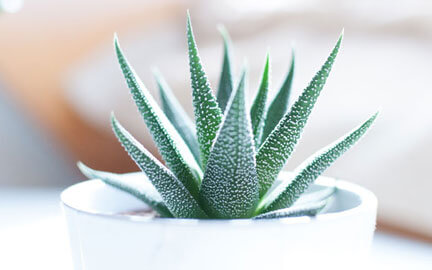
by mobilityplus | 10th Dec, 2020 | Inspiration
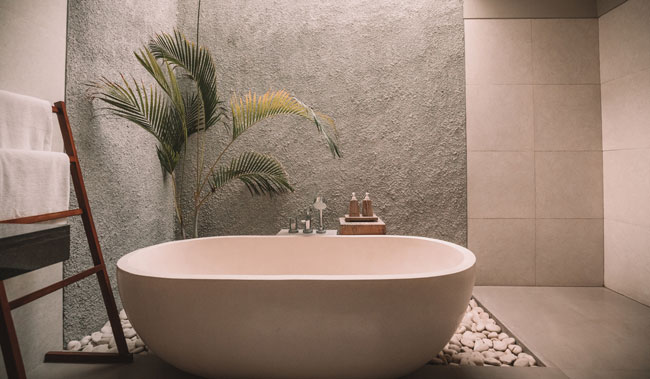
Typically, bathrooms have limited space, meaning that you can’t fill them with all the decorations that you love as comprehensively as you can in other parts of your home. However, there are always ways to bring life into your bathroom in new and innovative ways.
One such way to brighten up your bathroom space is by decorating it with plants that specifically suit your space. Plants are a great asset to any room, not only bathrooms, because they look delightful but also oxygenate the room. Studies have shown that having plants boosts your mood and reduces stress levels, alongside other benefits.
It can be tricky to find a plant that thrives in a small bathroom, due to low light and high humidity. However, here’s your introduction to a few plant friends that will be a great fit for your bathroom.
1. Spider Plant
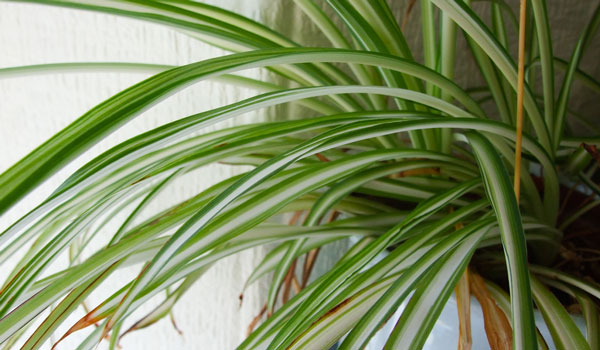
Our first entry of a plant to suit your small bathroom is the spider plant. Spider plants are known for growing rather quickly, and even have NASA’s seal of approval. The research that NASA conducted showed that spider plants can remove up to 90 percent of the toxins from the air in your bathroom in just two days.
Request a Free Brochure
Simply fill out a quick form and see how we can transform the way you bathe.
Request Free Brochure
If you’re prone to allergies, this is an excellent way of clearing the air. This plant is best kept near a window. Additionally, It’s best to avoid placing the plant on a radiator as it will lose its hydration.
2. Dracaena

This pretty plant is perfect for your small bathroom, and is a popular choice to help reduce the humidity in the room. Furthermore, the Dracaena plant also reduces dust and regulates the humidity in your home by releasing moisture.
Did you know that research has shown that indoor air can be 12 times more polluted than the air outside in some areas?
This is mainly due to the materials and chemicals used in furnishings, paints, and clothing becoming airborne. However, the dracaena plant can eliminate the pollutants, making breathing easier, help fight colds, remove airborne contaminants, and improve overall health. Be aware that this plant isn’t animal-friendly, though, so keep it out of the reach of any animals you have.
3. Snake plant

The snake plant is perfectly suited to the bathroom, big or small. Inexpensive and low-maintenance, this plant should be in your bathroom as it converts CO2 into oxygen at night. It’s easy to leave this plant to its own devices, as it is used to being in several different climate conditions.
If you forget to water your new friend for a few weeks, it’s not the end of the world as it will still thrive. The most appropriate place to keep the plant is anywhere where there is direct sunlight and occasional fresh air – so a bathroom window works perfectly.
If you’re a frequent traveller, this plant would be your best buy as it doesn’t mind missing you for a while! Choose this plant for your bathroom and you won’t be disappointed.
4. Aloe Vera
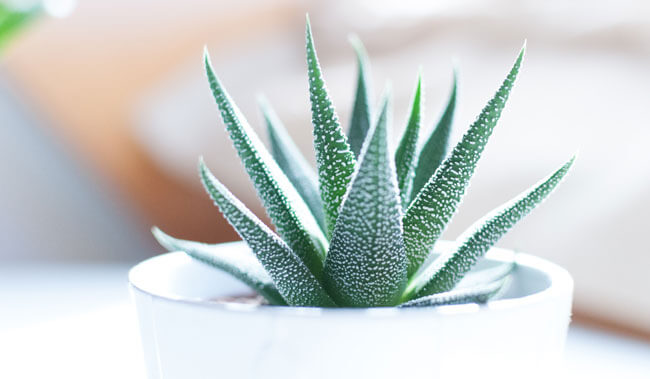
Not only is this plant low maintenance, but it also reproduces effortlessly.Aloe vera is also a great multi-purpose plant; you can treat minor cuts and burns from the gel in the leaves. Making this miracle plant not only ideal for a small bathroom but anywhere in the home.
Aloe vera is happiest close to a window, but not in direct sunlight. It’s perfectly suited for the bathroom, as it doesn’t need a lot of water to survive, so the humidity should be enough to keep it going.
5. Chinese Evergreen

The Chinese Evergreen is absolutely stunning plant, with leaves are streaked with white or yellow. It’s also one of the most low-maintenance plants you can have in the home. It thrives in medium to low light, or indirect sunlight, and loves humid conditions.
Although the humidity should be enough to keep this plant going, you can also spray the leaves to keep it hydrated if it’s looking a little bit worse for wear. Take care of this beauty and it’ll take care of you and keep your small bathroom looking stylish.
6. Orchid
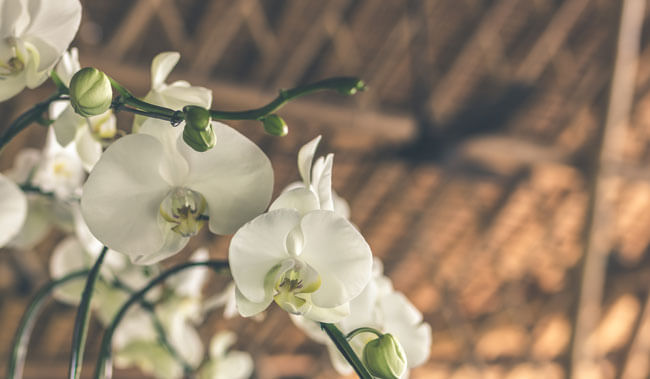
Orchids are an absolute beauty to look at and are a wonderful plant to add to your small bathroom – providing an often much needed pop of colour.
Orchids are naturally derived from humid, tropical rainforests and, therefore, bathrooms are often a great substitute. The warm, steamy atmosphere of a small bathroom can keep your orchid thriving for years.
You can place the plant on your windowsill, where it will not be under the sunlight directly. The steamy atmosphere will provide pretty much all the water that this beautiful flower requires.
7. Pothos
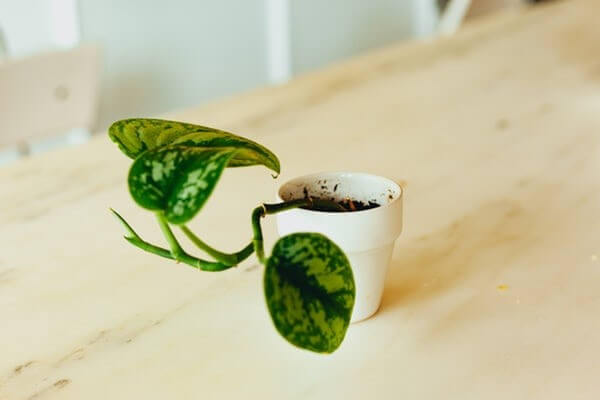
The golden Pothos blooms heart-shaped leaves, in a marble-esque pattern. The pothos doesn’t require too much water, so try to refrain from overwatering the plant, especially in a small bathroom where the moisture should be enough to keep it hydrated.
If you start to see yellow leaves, this is a good indicator that it has been overwatered. If this is the case, remove it from the bathroom and let it air out somewhere else in the home.
Additionally, pothos doesn’t do well under direct sunlight so avoid putting it on the windowsill. Because of the way it grows, however, it is a great hanging plant, and you can hang it from the ceiling or a high shelf where it’ll look stunning.
8. Bamboo

The notoriously fast-growing bamboo plant needs very little light to thrive and can grow in pebbles and water. If you do water it, we would recommend changing the water every two to four weeks, to keep the bamboo content. Bamboo grows quickly, so make sure you trim and prune when necessary!
We’ve only listed a handful of plants that would be a great addition to your small bathroom. Some plants flourish wonderfully in humid and low light conditions. Add a touch of nature to your bathroom, what are you waiting for?
If you’d like choose your bathing option before deciding on plants to accompany it, view our wide range of walk-in baths and walk-in showers.
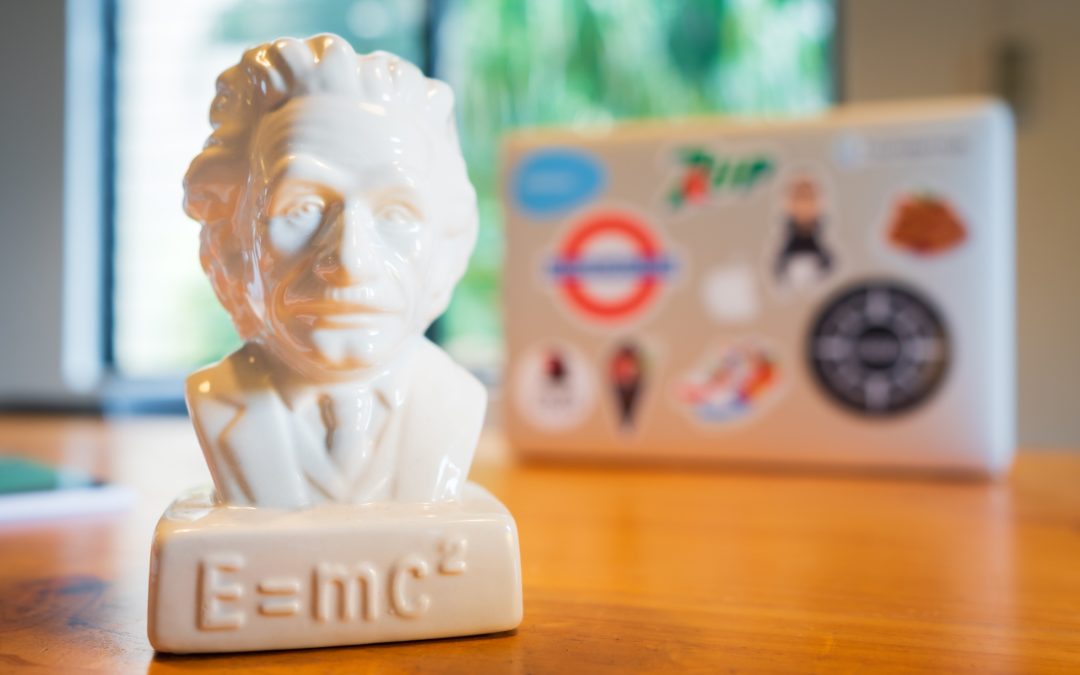
by mobilityplus | 10th Aug, 2020 | Inspiration
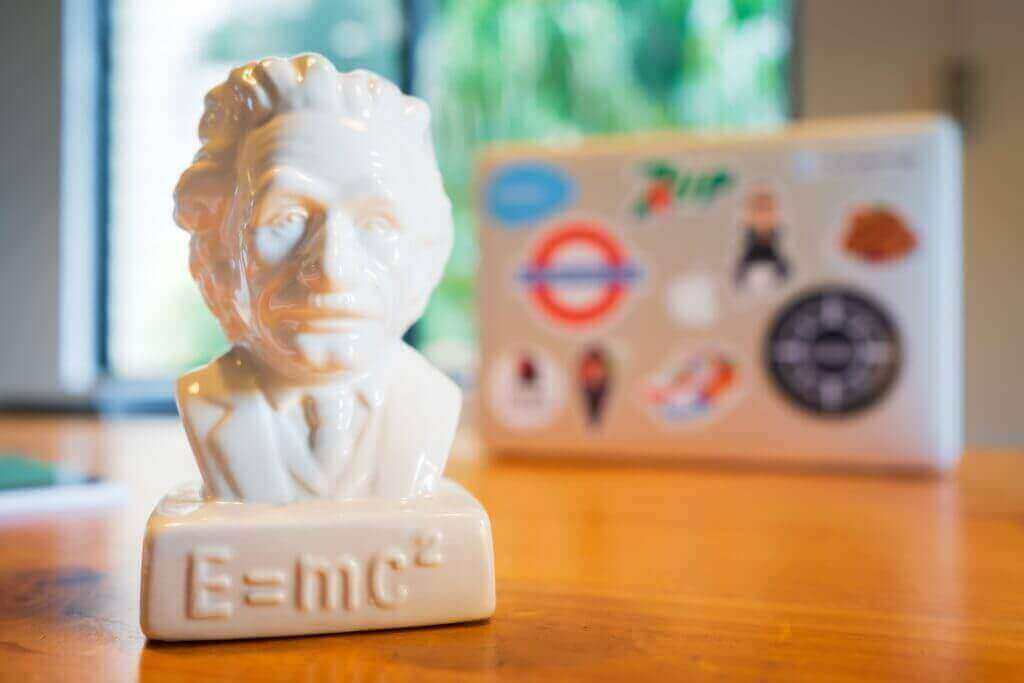
Ever wondered what the recipe is to a long, healthy and happy life? Well, as it turns out, there isn’t a one size, fits all approach. In fact, the varying degrees of life advice from old people all around the world is a shining example of just how many options there are to live your best and most satisfying life.
Of course, some may be a little more unorthodox than others. From the late supercentenarian, Susannah Mushatt Jones – who attributed her 116 years of age down to a daily serving of bacon to Ephraim Engleman, the doctor who worked right up until 100 years of age, discounting the need for exercise, vitamins or “going to a lot of doctors, either.” There are all sorts of pearls of wisdom out there.
If you’re looking for life advice from those who’ve been there and done that? Keep reading…
Never give up on your dreams
Starting off with a proverbial bang – and it may sound incredibly cheesy – this is a classic piece of life advice. You may even be reading this with a resounding nod. Because, let’s face it, we’ve all pondered at some point what could have been if we had the confidence to really go for our dreams.
But the great news? It is never too late. Take 70-year-old Diana Nyad – the inspirational woman who overcame much adversity and – who, at the age of 64 years old became the first person to swim from Cuba to Florida without the use of a shark cage for protection. A key piece of life advice from Diana? “We should never ever give up; you’re never too old to chase your dreams.”
Need further proof? Great-grandmother, Georgina Harwood, decided to up the ante once becoming a certified centenarian. How so? By celebrating such an occasion with a skydive, shark dive and hike up Cape Town’s Table Mountain.
While we’re not suggesting that every dream needs to be of such a high calibre, it does shine a light on how at any age if you put your mind to it, you can achieve something you’ve always wanted to. As 75-year-old Motivational Speaker, Les Brown simply put, “You are never too old to set another goal or to dream a new dream.”
Try to keep active
One of the most sage pieces of life advice from those who’ve lived it and learned it is to keep moving. Whether it’s a walk, run or hike up a mountain, it can be crucial to living a longer life.
Studies show that exercise can boost life expectancy. It can also help you to age at a slower pace and live a healthier, more vigorous life. Further research also highlights that a lifetime of exercise can help to defy the ageing process. From an increased immunity and muscle mass to possessing cholesterol levels of a young person.
But it’s never too late to increase your steps and get moving.
An inspiring example of this is 99-year-old war veteran, Captain Sir Thomas Moore, who raised a staggering £15m for NHS staff after reaching his goal of walking 100 laps of his garden during the pandemic. Showing just how much our bodies are capable of when we put our minds to it, it highlights that even in the most unprecedented and challenging of times, it’s important to keep going.
As the late Susan O’Malley – author of the 2016 book Advice from My 80-Year-Old Self – found when compiling an abundance of essential life advice from older people, it’s important to “appreciate your body, especially when it’s working.
Think positive thoughts
Studies show that those who employ a greater sense of optimism are more likely to live longer and achieve something called “exceptional longevity” What does that mean exactly? Living to age 85 or older. Interested? The study also highlighted that people who had the highest optimism scores had a lifespan of roughly 9% longer than people with lower scores.
With an exceptional amount of negativity seemingly suffocating us at times, it can be difficult to maintain a sense of optimism or a general expectation that good things will happen, but the benefits speak for themselves.
From the ability “to regulate emotions and behaviour and bounce back from stress and difficulties more easily,” the research also showed that optimistic people tended to have healthier habits which could extend their lifespan.
One way to try and inject some instant positivity? Take a leaf out of Dr Manfred Diehl’s book. As a professor of human development and family studies at Colorado State University, his focus lies on successful and healthy ageing. Try these positive emotion exercises to kick things into optimistic gear
Make the best use of your time
This can be tricky because if you’ve reached a certain time in your life, you may not be sure of the best way to utilise your time. Old habits and lifelong commitments can pose a problem. If that’s the case, how do you go about changing this? Confused? Great. That’s an excellent place to start.
The first step in assessing how to make the best use of your time is to see what else you’re dealing with, right? So, pick up an organiser, jot down all the activities, events and commitments you’ve signed up to and see what you’re left with. The rest is down to you.
That’s not to say it will be an easy task. With so many distractions around us, life can be, well truly and utterly exhausting. But the good thing is that you get to decide which path you want to go down. Whatever it may be, from picking up a new hobby, meeting new people or making adjustments to your home life, it’s important to set goals and work in ways in which you can achieve these.
85-year-old, world-class record-breaker athlete, Flo Meiler is a great example of this. Deciding to take up track and field at the age of 60, after watching the pole vaulting competition at the Senior Olympics, she had a thought, “They weren’t pole vaulting very high. And I said to myself, you know, I think that I could do better than that.”
Not into Pole Vaulting? No problem. Find out what you want to do with your time and take the necessary steps to make it happen. Channel Flow when you channel life advice. Why not you? Why not anyone? Life is what you make it, after all.
Take time for yourself, every day
From social commitments to home life and everything else that sits in between, the day can come and go without you even taking a moment’s thought for yourself. But it’s important to slow it down and schedule in some “you time” every day. Why? The benefits speak for themselves.
Not only can it refresh and re-energize your mind and body, but it can also improve your self-esteem and give you a more improved sense of purpose over time. And don’t ever let age put you off indulging in “you time”, as well as remembering that self-care can come in many forms – even in the way you get dressed every day.
As Albert Einstein once famously said, “I have reached an age where if someone tells me to wear socks, I don’t have to.”
It’s important to remember that taking time for yourself isn’t a competition and doesn’t always have to be a huge new venture. Sometimes it’s a moment to put your feet up, pop on your favourite guilty pleasure, whether it’s a TV show, song or opening up a chapter in a book. You may even decide to sink into a luxurious bubble bath. That may very well be the best use of your “you time” at that moment.
Embrace your individuality
Hands up. How many of us have spent time questioning our identity? Our quirks, our habits, our emotions, behaviours and thoughts? We thought so.
Embracing your individuality and owning yourself is largely about acceptance. And it can often be a struggle to get there. But it’s important to know that it’s not just about accepting and loving the parts you like and admire about yourself. It’s also to do with the parts you may not be so keen on. The parts that you worry might hold you back or stop you from achieving what you think it is you might want.
It can be a long road but a crucial piece of life advice is that once you stop focusing on your perceived weaknesses and instead realise that these are the exact things that make you the complex, unique and wonderful individual you are, the more fulfilled and rich your life will be.
Take it from 77-year old food writer and broadcaster turned artist and curator, Sue Kreitzman.
“The things that make you unique, the things your mother wants to change about you, the things that make you so different from those you go to school with, are the very things that will bring you success, happiness and a modicum of real fame. The things that will make a difference to the world. The things that will give you a richly textured and deeply happy life.
You are not weird, you are actually quite special. Keep it up, do not swerve from your ideals, and…do not despair!”

by mobilityplus | 30th Oct, 2019 | Inspiration

Caring for an older parent or relative can be an incredibly rewarding experience that brings you closer together. It can also be a very challenging experience in today’s busy, non-stop world.
Most carers are juggling family life, work and other commitments. This means they don’t always have time to fully be there for their older parents. In the UK, there are roughly 4.27 million carers who are also of working age. 1 in 5 carers has had to give up their job in order to care for a loved one. One thing that can really help both the old and young in this situation is technology.
How can technology help?
Voice recognition assistants and software, wearables, virtual services and even robots are all making things easier for the older population, helping them to live longer, more independent lives. This not only improves life for older people but can also make your responsibilities as a carer more manageable.
By staying more digitally connected to friends and family, older parents are also less likely to be affected by the growing loneliness problem faced by their demographic. In the UK alone, over 1.2 million older people are chronically lonely. This is as a result of living on their own and not being in contact with family and friends on a regular basis. Over 17% of older people are in touch with family and friends less than once a week while 11% are in contact less than monthly.
While grasping new technology may seem challenging for more senior members of society, teaching your parents how to use it could provide tremendous benefits. Just as there are a lot of things older parents can do for you, there’s a lot you can teach them, and that includes new technology.
Here are some new pieces of tech that could improve living for your older parent(s).
Online services
If mobility is an issue for your parent, then signing them up to an online platform that provides virtual checkups and appointments could be life-changing. These days, everything from doctor’s appointments to ordering transport and arranging deliveries can be done online, from the comfort of one’s home. Services like GP at hand and Push Doctor make doctors’ appointments accessible to those with limited mobility. Similarly, Simple Online Pharmacy can deliver prescriptions directly to their doorstep, eliminating the need for frequent trips to the local pharmacy.
Voice-activated software
Voice-activated software is a huge boon for older adults who no longer want to be fussing about with complicated remotes and confusing interfaces. A simple voice command can turn on the telly, even turn on the TV, lights even the coffee maker. Smart speakers like Amazon’s Echo Plus with Alexa built-in and the Google Home and assistant are leading the pack but many other solutions are coming on the market. The Wink Hub 2 is another great option if you want to integrate everything from your light switches to your kitchen appliances.
Robot companions
While the term ‘robot’ might read a little uncomfortable to some, there are many companies looking to harness the more positive aspects of AI and smart systems to help more vulnerable people. Some have even created smart companions that don’t look anything like ‘robots’ and have a more lifelike feel. The therapeutic Paro, an adorable fluffy seal helps those with dementia and even Hasbro has created artificially live cats and dogs that will keep you company. EllieQ is one of the latest to be developed that helps dispel feelings of loneliness.
Wearable tech
As we get older, keeping track of our health, especially (on a daily basis) becomes so much more important. Smart devices such as the Apple Watch and Fitbit can help an older parent keep tabs on their general health in a way that’s quantifiable and real. These devices make it easy to set goals like amounts of steps taken every day or number of glasses of water. Even quality of sleep can be tracked.
Personal alarms
If there’s one technology you should definitely look at investing in if you’re concerned about an older parent being on their own at home, it’s a personal alarm. With just a click of a button, your parent could get in touch with emergency services if they were ever in a critical situation. Companies like SureSafe and LifeLine24 offer these kinds of alarms and services. Most systems can be installed hassle-free and be integrated with their smartphone.
Further to this, here are some tips and tricks for helping older parents get used to new technologies.
Have patience
While this may go without saying, it can be easy to get impatient when teaching our older parents how to use technology. Tap here, swipe up, press this button – it’s not always as obvious to get on the first try as we think! Being patient will keep them coming back to you for more help and advice (instead of going to someone else).
Take it one step at a time
You may be tempted when teaching your parents about tech to load them up with tons of apps, features or to get them using shortcuts straight away. But doing too much all at once could be overwhelming. By focusing on one small thing at a time, they’ll gradually become more confident and adept with using new technology.
Consider what’s best for them (not you)
Remember, you and your parent(s) are likely very different. What works for you won’t always work for them. Instead of forcing them to use tech that you prefer, try seeing it from their point of view. Ask yourself what’s going to work for them rather than just for you. Also, ask yourself what they may be happier with.
Make instructions accessible
One of the easiest ways to teach your parents about new tech is to create a tutorial for them. This could be a video you upload to a private YouTube channel (you could even do a screencast for them) or something a little more familiar to them, like written instructions.
With these tips and tricks, your older parent should be off to a flying start when using their new tech. It might also open up a whole new world of things they could do while enjoying the peace of retirement.























